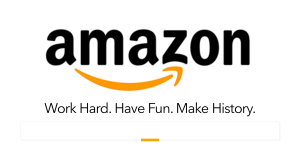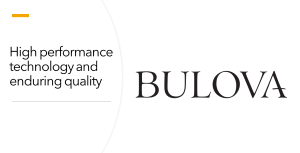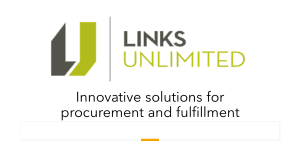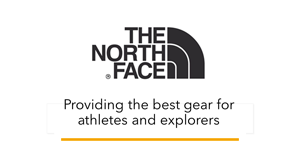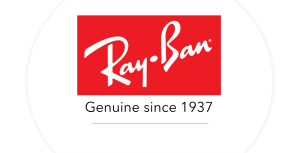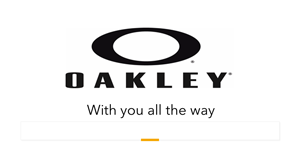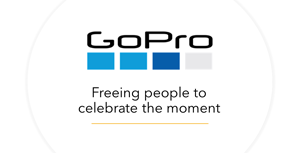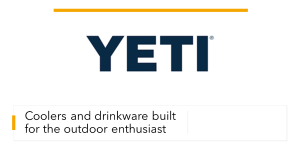How the EU Corporate Sustainability Reporting Directive Affects the IRR Marketplace
 US incentive, rewards, and recognition companies may not think a European Union law aimed at EU enterprises with 250 or more employees could affect their business. Many didn’t realize the European Union GDPR (Global Data Protection Regulation) would become in effect an almost universal standard for the protection of privacy or that EU regulations could force Apple to accept the international USBc standard for power chargers. Here’s what incentive, reward, and recognition companies need to know about the law.
US incentive, rewards, and recognition companies may not think a European Union law aimed at EU enterprises with 250 or more employees could affect their business. Many didn’t realize the European Union GDPR (Global Data Protection Regulation) would become in effect an almost universal standard for the protection of privacy or that EU regulations could force Apple to accept the international USBc standard for power chargers. Here’s what incentive, reward, and recognition companies need to know about the law.Small- to Medium-Size Companies to Be Affected as Well
All Stakeholders Are Involved
The new European Union Corporate Sustainability Reporting Directive is designed to reduce greenwashing and level the playing field among large companies. It requires publicly available audited disclosures with metrics on how the products and services of large companies create opportunities and risks for customers, employees, supply chain and distribution partners, communities, and the environment, and how in turn stakeholders and the environment create risks and opportunities for the enterprise.
The Society for Incentive Travel Excellence (SITE) recently published a report on the subject for its members focusing on the impact on the MICE (Meetings, Incentives, Conventions, and Exhibitions) market. Here is the potential impact on the incentive, rewarrds, and recognition market.
- The law will have a direct impact on most of the leading brands active in the IRR field; the incentive, reward, recognition, and fulfilment companies that do business with them, starting as soon as 2024 when the largest companies will have to begin preparing for the first reports to be published in 2025 based in some cases on data from 2024 compared with 2023.
- Most of the leading brands in the US do sufficient business in the European Union to fall subject to the law, meaning they will have to disclose specific information and metrics on stakeholder engagement processes, most particularly related to employees, customers, and supply and distribution partners. If they do not meet the threshold, they may still be affected if they do business with companies that do.
- The law requires companies subject to the law to seek related information about the treatment of employees from their supply and distribution partners, meaning that companies that do business with these large organization likely will receive requests for information on their people management practices, regardless of whether they have to themselves provide audited reports.
Small- to Medium-Size Companies to Be Affected as Well
A recent article in I by IMD reports on the case of a California company with 30 employees recently asked to provide details on its ESG (Environmental, Social, Governance) practices. It states that “even if SMEs are not required to report data de jure, they will be pressured to do so de facto by large buyers of their products and services.” This same phenomenon has occurred in the world of total quality management standards, in which companies with ISO standards request the same of their key supply chain partners.
Organizations can either choose to view these reports as a nuisance and do as little as possible to check off a box or use them as an opportunity to enhance their performance through stakeholder engagement strategies--similar to the same strategic and systematic processes that help enhance quality in manufacturing.
The core purpose of the law is to reduce greenwashing by large companies and to “level the playing field” by requiring all companies with more than 250 employees, revenues of more than $44 million or total assets exceeding $22 million, as well as non-EU companies with at least one subsidiary in the EU and sales of more than $166 million, to disclose detailed information on the purpose, goals, and objectives of the organization; the practices used to achieve them for each stakeholder group; the means by which it measures performance including dozens of specific people metrics; and the process by which it continuously improves.
The reports must be independently audited by a qualified auditor, starting with the same companies that audit financial reports. The annual reports must be filed electronically public following a standardized format enabling all stakeholders to access information in a comparable format, which will be available at no cost on an EU-managed web site.
Essentially, the disclosures seek to clarify:
- An organization’s value proposition and purpose.
- The risks and opportunities the organization creates for employees, supply chain and distribution partners, communities, and customers.
- The benefits it creates for stakeholders and the costs externalized onto society because of substandard wages and benefits, supply chain and distribution partner management, poor community relations, or pollution.
- The verifiable processes and metrics to monitor progress, and any changes in strategies and corresponding reasons.
-
When disclosing targets in relation to any stakeholder, the disclosures should include:
- The intended outcomes to be achieved in the lives of the stakeholders, being as specific as possible;
- Verification that these are measurable/verifiable;
- Assurance of their stability over time in terms of definitions and methodologies to allow for continuity in the data points derived from the targets, and/or,
- Standards or commitments on which the targets are based are to be clearly defined in the reporting (for instance code of conducts, sourcing policies, global frameworks, or industry codes).
All Stakeholders Are Involved
Reporting encompasses all stakeholders, including senior management.
1.The organization's own workforce: The report must enable readers to understand how the undertaking affects the company’s own workforce by covering working conditions, access to equal opportunities and other work-related rights, work-life balance, diversity, health and safety, social dialog, professional development, people with disabilities, along with detailed disclosures on workforce demographics.
2.Workers in the value chain: The report must set out how the company affects workers in its value chain through its own operations and its upstream and downstream value chain (including its products and services, its business relationships, and its supply chain). This includes disclosures on processes for engaging with such workers, channels through which such workers can raise concerns, targets related to managing material impacts on such workers, and remediation of material impacts on such workers, among others, along with the same types of disclosures required of a company's own workforce.
In the above cases, companies subject to the law must disclose information on the following metrics and many may feel compelled to ask the same of their supply chain to minimize risks.
- Employee turnover
- Gender diversity
- Gender-pay disparities
- Executive-to worker pay ratios
- Worker voice and representation
- Unionization rates
- Incidents of discrimination
- Programs to access skills development .
- Number and nature of performance reviews
- Injury rates.
4.Consumers and end users: The report must set out policies and targets that address the management of the material impacts its products and services have on consumers and end users – including impacts to a consumers’ privacy or health, processes for consumer and end-user engagement concerning actual and potential impacts, mechanisms through which consumers and end users can raise concerns, and approaches to mitigating material risks and remediating actual impacts. This includes claims made in marketing and reputational risk for failure to deliver those claims, including communications and even product assembly instructions.
Keep in mind that in EU parlance consumers are resellers—distributors, agents, brokers, and retailers, meaning that the disclosures include the above information will shed light on supply and distribution chain practices as well.
5. The environment. Outside of the MICE (meetings, incentive, conference, and exhibitions) market, the environmental disclosures will be less demanding for all but the brands and major master fulfillment companies with warehouse and other logistics operations. Essentially, the law seeks organizations to report on their impacts on: Climate change, pollution, water and marine resources, biodiversity and ecosystems, and resource use and circular economy. Only brands and master fulfillment companies fall under the reporting requirements of Scope 2 for emissions, which refers to companies that consume energy and materials, versus those that produce them (Scope 1), and Scope 3, which refers to companies that purchase and consume products and services that produce emissions and waste.
6. Management. Under its governance clause, the law requires disclosure of incentives for managers and administrators related to promoting sustainability initiatives, including their nature and purpose.
For More Information
Bruce Bolger, Founder, CEO
Enterprise Engagement Alliance at TheEEA.org
914-591-7600, ext. 230
Bolger@TheEEA.org
RRN: Your Partner in Success in Incentives, Rewards, and Recognition
Published by the Enterprise Engagement Alliance at TheEEA.org- The only weekly news, how-to and resource publication of record for the Incentive, Rewards, and Recognition field.
- The only marketing agency focusing specifically on the IRR and broader engagement marketplace.
The Industry’s Only Combined Media Platform and Marketing Agency to Help You Expand Your Business
- All the industry news, research, announcements, and how-to articles read by over 20,000 end-users in sales, marketing, and human resources; incentive, recognition, loyalty and promotional companies, as well as marketing and human resources agencies, seeking to enhance performance through effectively designed incentive programs.
- Unparalleled business development services for engagement, incentive and incentive travel, recognition firms; brands, gift cards and master fulfillment companies, and technology firms, featuring ROI-based business development strategy design and ongoing digital and social media and e-newsletter communications to help marketers profit in the coming era of cookie-less marketing.
- Unique abilities for solution providers to sponsor authoritative, evergreen content directly related to what they sell through the EEA’s Effective Practices series on articles in our media platforms.
- EEA YouTube Channel with over three dozen how-to and insight videos and growing with nearly 100 expert guests.
- Access to new technologies from EEA preferred solution providers enabling brands to create their own points-based or transactional redemption site.
- Unparalleled expertise in program design, return on investment measurement, reporting, and prescriptive analytics.
Outreach to Enhance Industry Awareness
The EEA is dedicated to helping address the fact that the IRR business remains a little-known industry.
- The Association of National Advertisers education effort reaches the CMOs of almost every leading brand to promote our industry and the importance of program design through created for their members.
- The Brand Media Coalition has led the way in helping brands better tell their stories for use in incentive, recognition, and loyalty programs, and to actively promote the importance of the reward experience and buying through industry channels.
- The Enterprise Engagement Alliance is assisting companies with the upcoming Corporate Sustainability Reporting Directive, which includes details on the practices and metrics involved with employee and customer engagement.
Promoting Effective Program Design
- The EEA provides comprehensive and growing library of concise, research-based resources to promote serious ROI-based thinking, including the importance of the reward experience.
- Join the Enterprise Engagement Alliance to master the processes of enterprise engagement, stakeholder management and reporting, or contact the EEA to get expert assistance on strategy design, implementation, and reporting.
RRN: Your Partner in Success in Incentives, Rewards, and Recognition
Contact Bruce Bolger at 914-591-7600, ext. 230 or email Bolger@TheEEA.org when you want to get to know or get known in this growing $1.76 billion marketplace.







